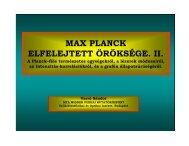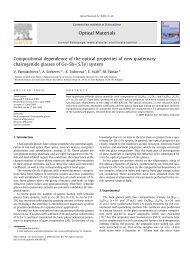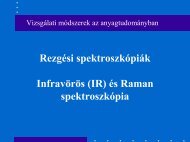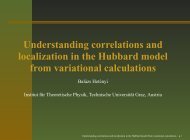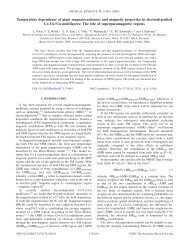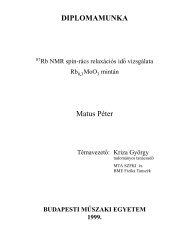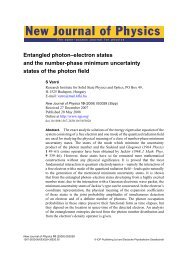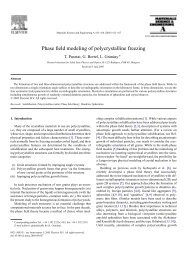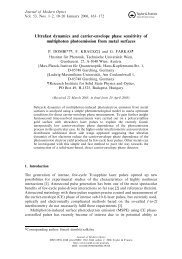ANNUAL REPORT - MTA SzFKI
ANNUAL REPORT - MTA SzFKI
ANNUAL REPORT - MTA SzFKI
Create successful ePaper yourself
Turn your PDF publications into a flip-book with our unique Google optimized e-Paper software.
A. STRONGLY CORRELATED SYSTEMS<br />
J. Sólyom, K. Buchta # , Ö. Legeza, K. Penc, E. Szirmai # , K. Vladár, F. Woynarovich, A.<br />
Zawadowski +<br />
Low-dimensional fermionic models. — We have continued the study of quantum phase<br />
transitions in low-dimensional fermionic systems by analyzing the behavior of quantuminformation<br />
entropies for sites and blocks calculated using the density-matrix<br />
renormalization-group (DMRG) method. We proposed a new entropy-based approach to<br />
study transitions from uniform to spatially inhomogeneous phases. It was shown that<br />
oscillations in the length-dependent von Neumann entropy and its corresponding Fourier<br />
spectrum for finite segments determine the wave vector of soft modes in critical systems,<br />
while they give the wave vector of spatial inhomogenity of the ground state in gapped<br />
systems. The phase diagram of the Hubbard model with both nearest and next-nearest<br />
hopping was determined and it was shown that the commensurate-incommensurate<br />
transition is independent of the insulator-metal transition.<br />
By studying energy gaps and various quantum-information entropies it was shown that in<br />
the half-filled one-dimensional SU(n) Hubbard model, except for n=2, finite spin and<br />
charge gaps are found for arbitrary positive U, the transition to the gapped phase at U c =0 is<br />
of Kosterlitz-Thouless type and is accompanied by bond dimerization both for even and<br />
odd n. In the 1/n-filled case, the transition has similar features as in the half-filled SU(2)<br />
Hubbard model. The charge gap opens exponentially slowly for U>U c =0 and the spin<br />
sector remains gapless. The model was further investigated analytically by bosonization<br />
approach and numerically using the DMRG method for n=3, 4, and 5 for commensurate<br />
fillings f=p/q where p and q are relatively prime. Umklapp processes are irrelevant when<br />
q>n, and the model is equivalent to an n-component Luttinger liquid with central charge<br />
c=n. When q=n, the charge and spin modes are decoupled, umklapp processes open a<br />
charge gap for finite U>0, whereas the spin modes remain gapless and the central charge<br />
c=n–1. The translational symmetry is not broken in the ground state for any n. On the<br />
other hand, when q



